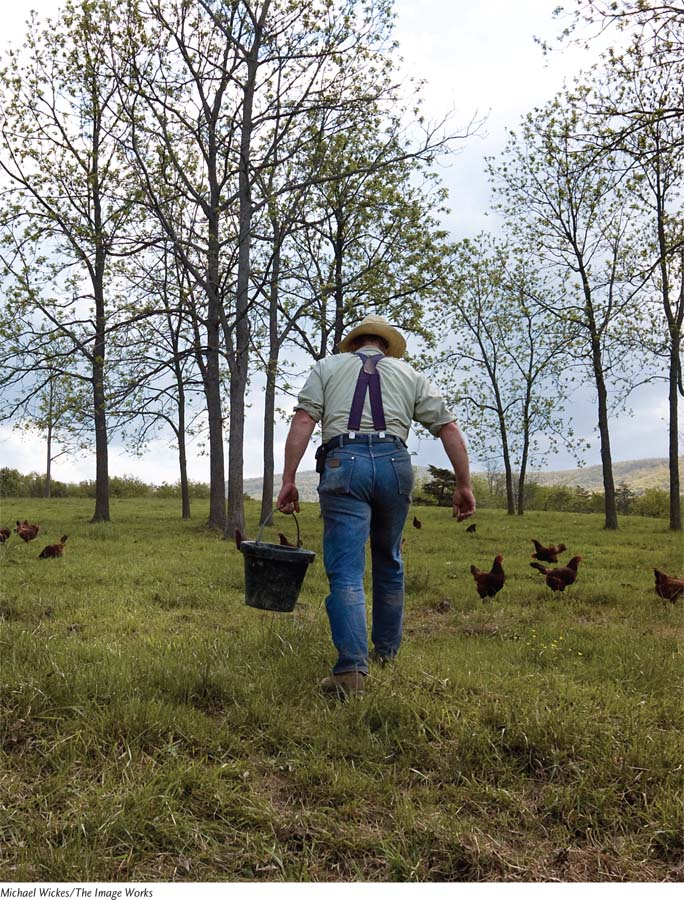Chapter Introduction
chapter 11
Feeding the World

A Farm Where Animals Do Most of the Work
It is common for a farmer growing juicy tomatoes or sweet apples to become a local hero, but how often does a farmer become known throughout an entire country?
Salatin understands that farming, done properly, has to replicate many of the processes that exist in nature.
Joel Salatin of Swoope, Virginia, has been featured in a best-
Salatin calls himself a “grass farmer” because grass is at the foundation of the trophic feeding pyramid. On his Polyface Farm, he grows grass that is harvested, dried by the Sun, and turned into hay, which he feeds to cattle. The cattle are processed into beef and consumed by humans. But that is only one piece of the intricate food chain that Salatin has created on his farm—
As cattle graze a field, they leave behind large piles of manure that become the energy source for large numbers of grubs and fly larvae. Before the larvae can hatch into flies and cause a problem on the farm, Salatin brings in his “sanitation crew”—not people spraying pesticides, but chickens. As the chickens eat the larvae, they spread the nitrogen-
Salatin uses other animals to take care of the buildup of cow manure during winter when his cattle remain in a barn. Some farmers push that manure out the doorway and end up with huge manure piles in the spring but Salatin continuously layers straw, which consists of dried stalks of plants, and wood chips on top of the manure. He allows the floor of his barn to rise higher and higher during winter. Occasionally he throws down some corn. During the winter, the manure-
These are just two examples of the ways one farmer uses natural processes and knowledge of plants, animals, and the natural world to grow food for human consumption. Joel Salatin and other farmers interested in sustainable farming are finding ways to feed the human population by working with, not against, the natural world.
Sources: M. Pollan, The Omnivore’s Dilemma, Penguin, 2007; R. Kenner (director/producer) and E. Schlosser (producer), Food Inc., Magnolia Home Entertainment, 2009.
Most agricultural methods, especially modern ones practiced in the developed countries of the world, tend to fight the basic laws of ecology to provide large amounts of food for humans. These modern methods also use substantial quantities of fossil fuel in every step of the process, from the use of machinery in plowing and harvesting crops to the production of fertilizers and pesticides to the transportation and processing of the food. However, there are ways to grow food efficiently without using as much fossil fuel, manufactured fertilizers, and pesticides as currently used. In this chapter, we will explore the current state of human nutrition around the world, and examine conventional, large-